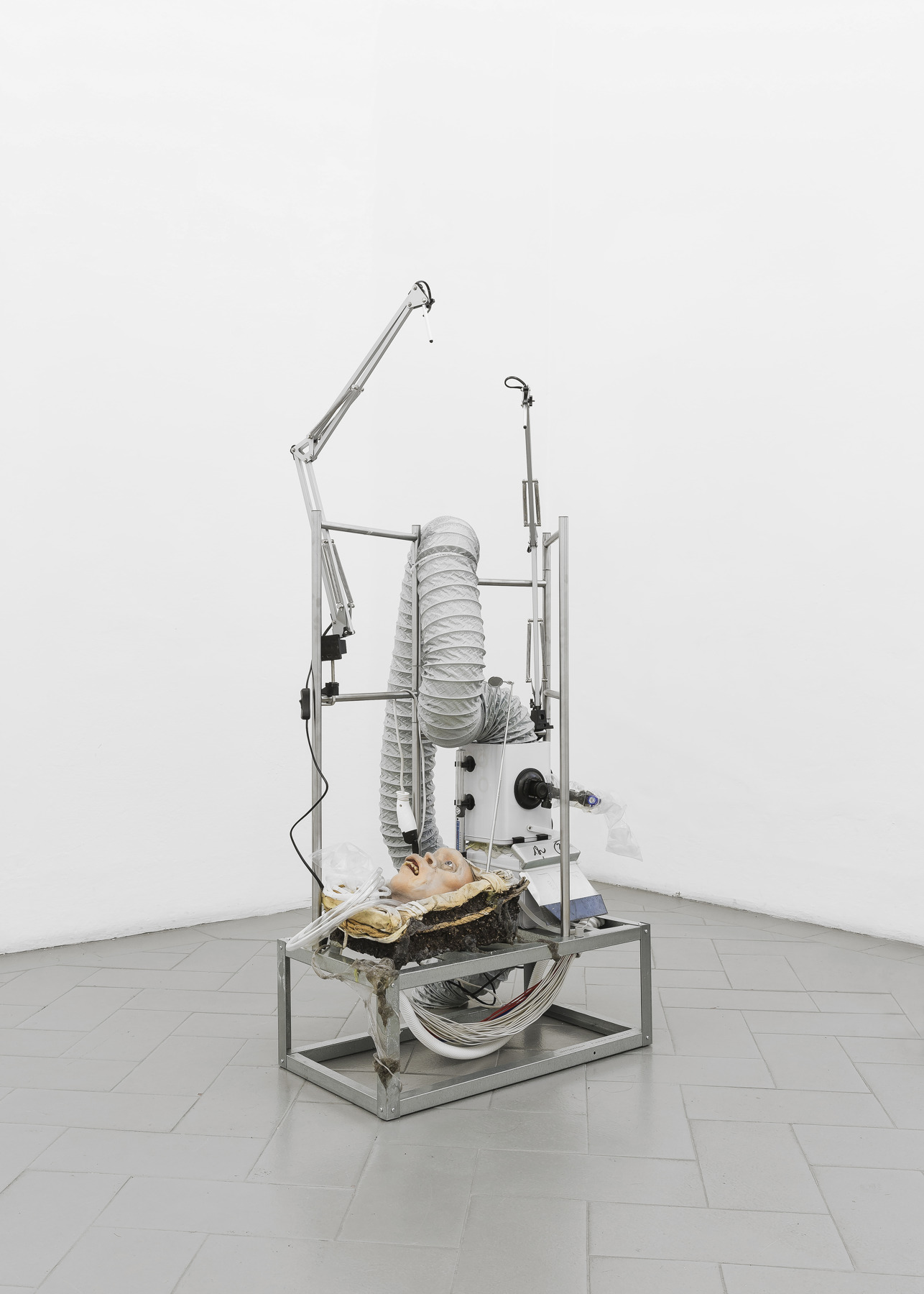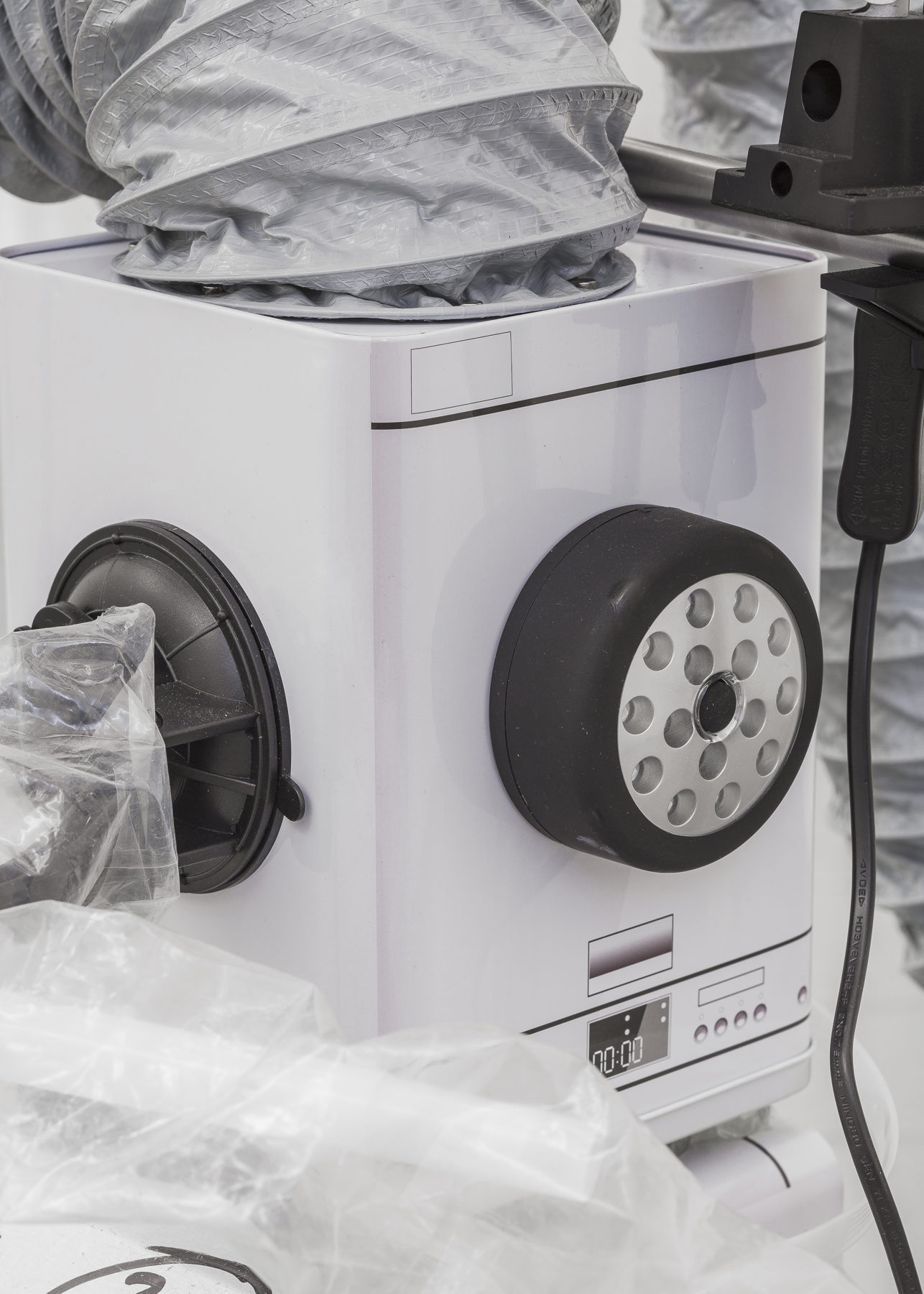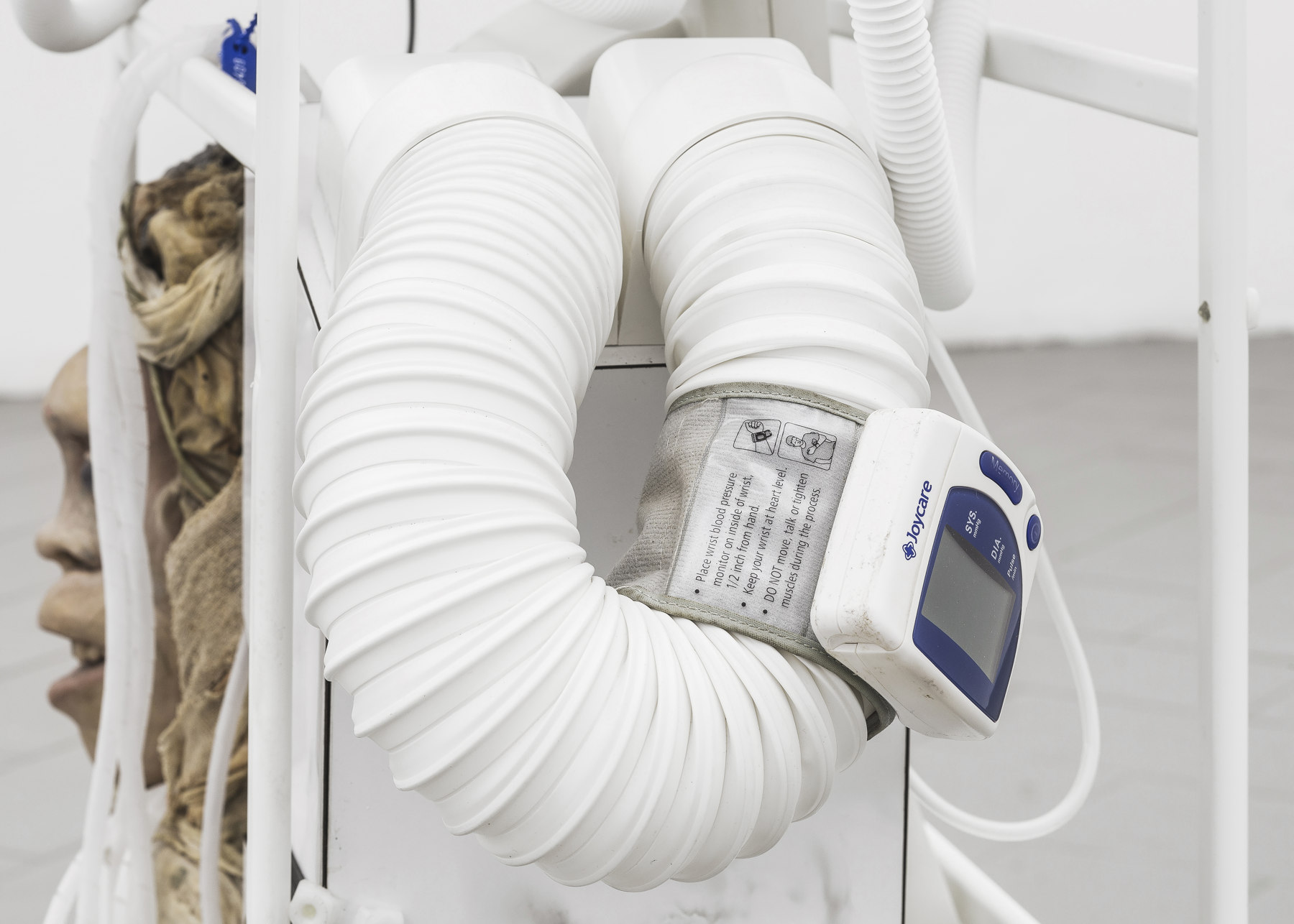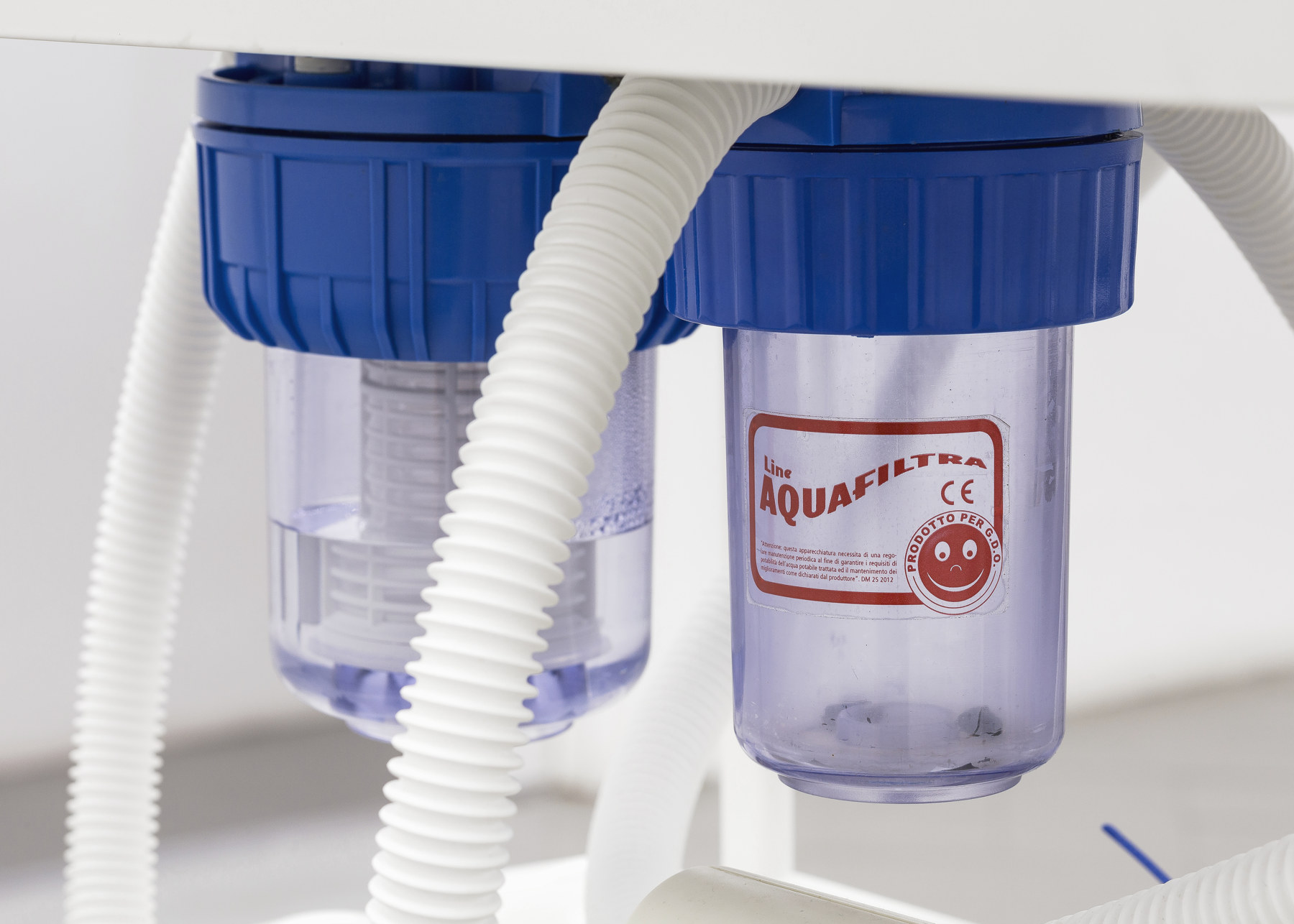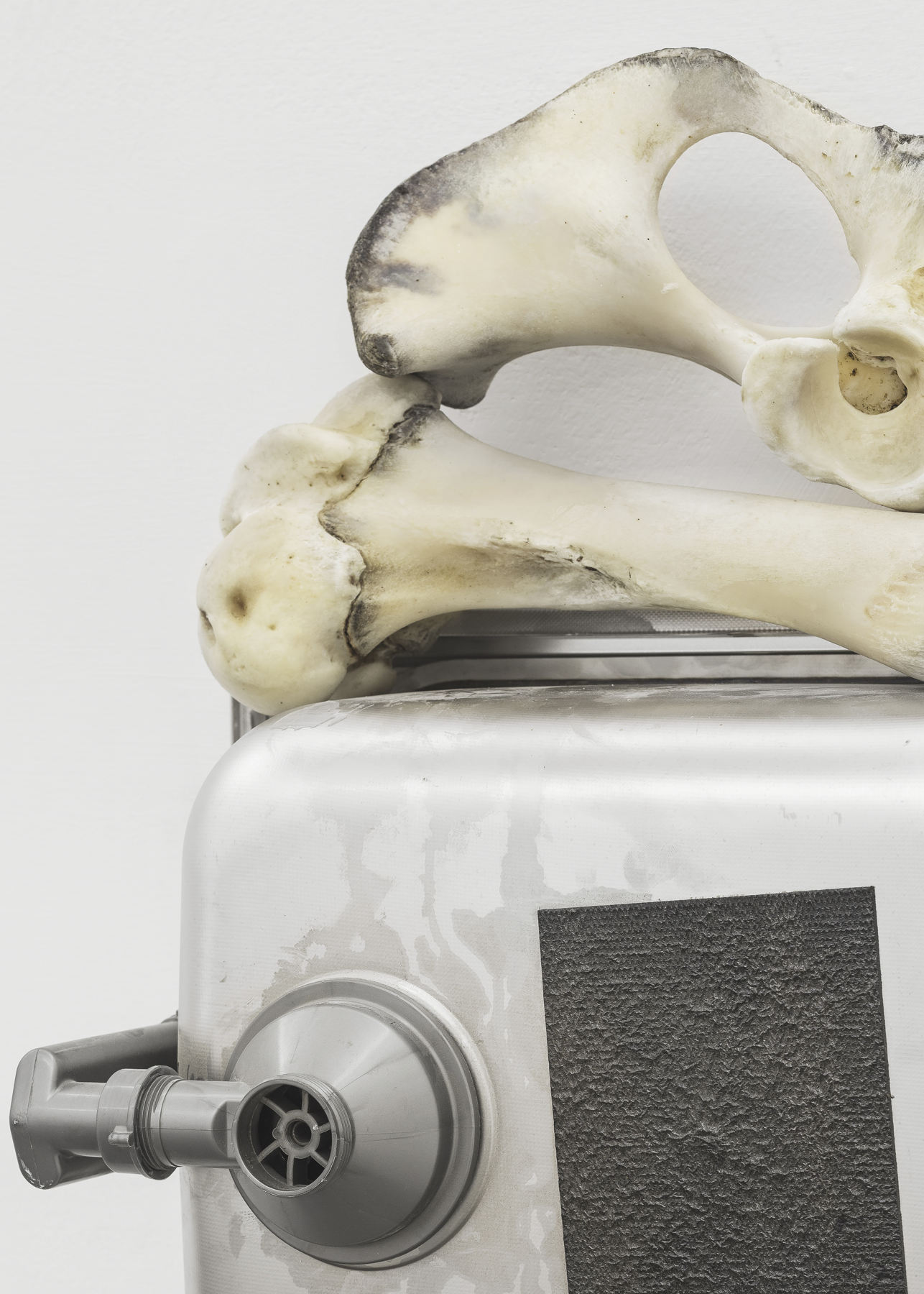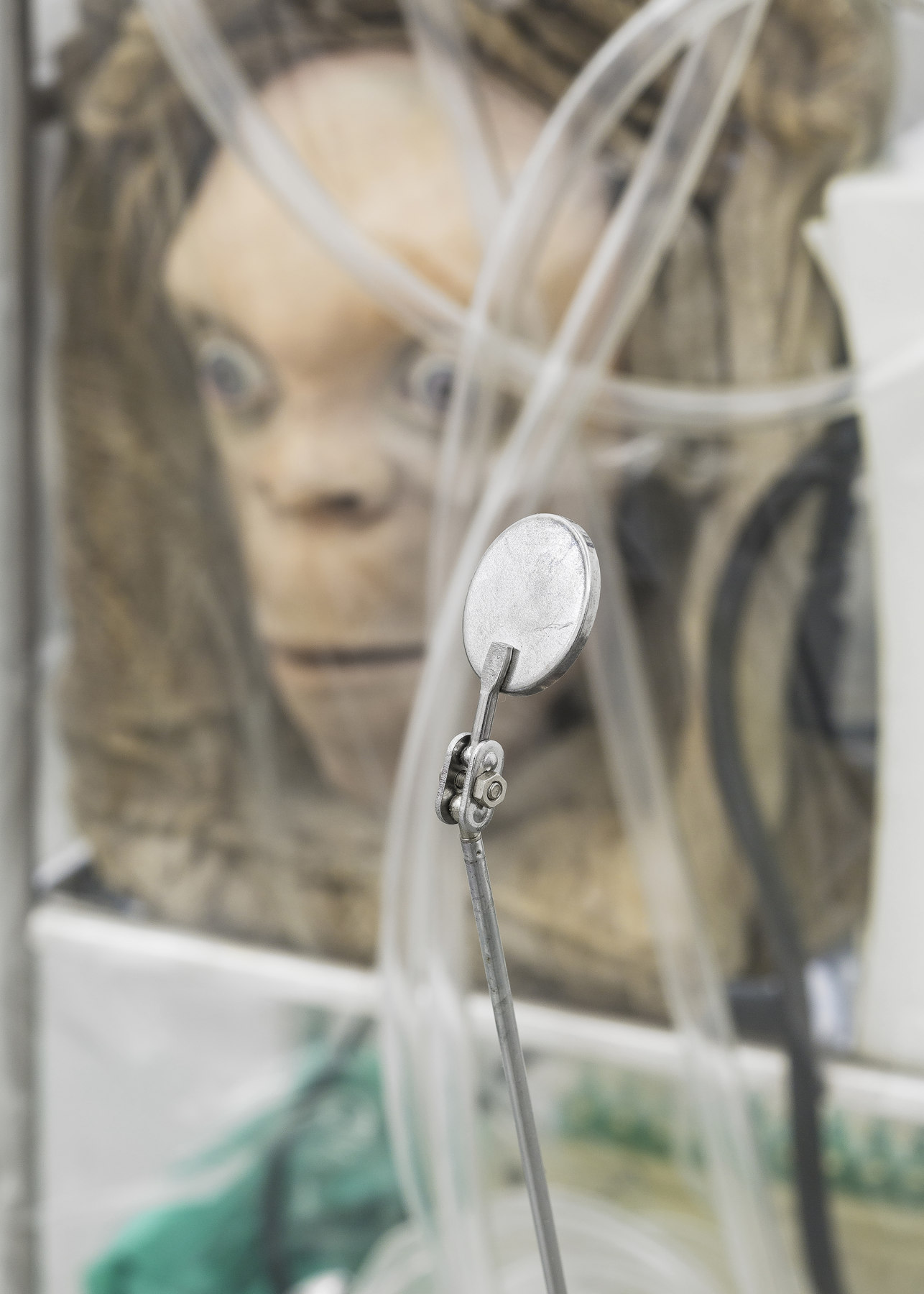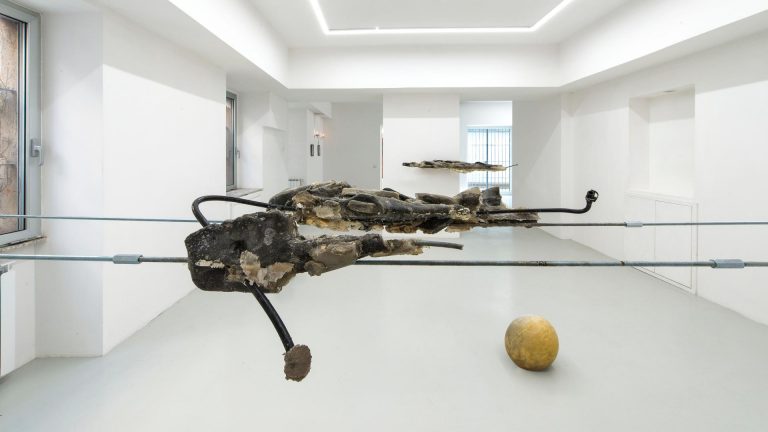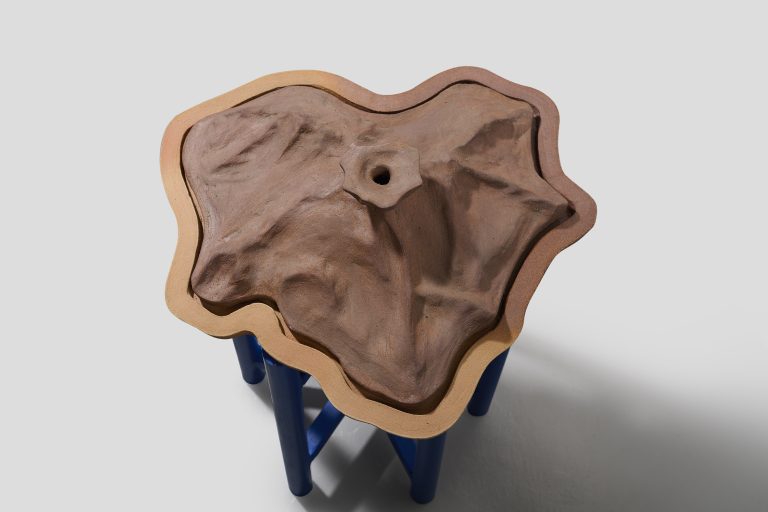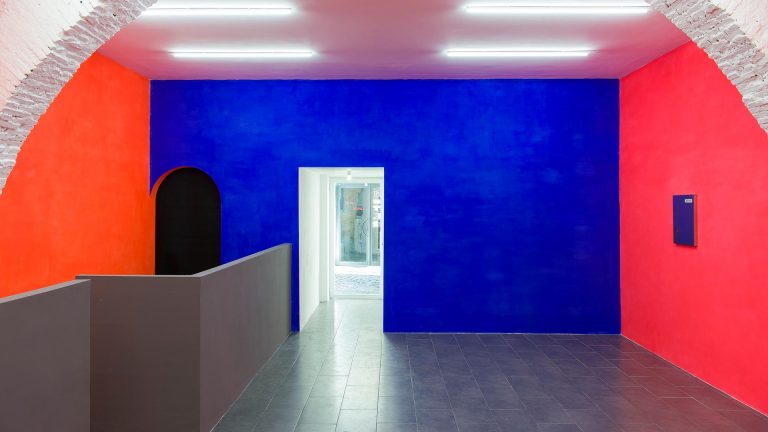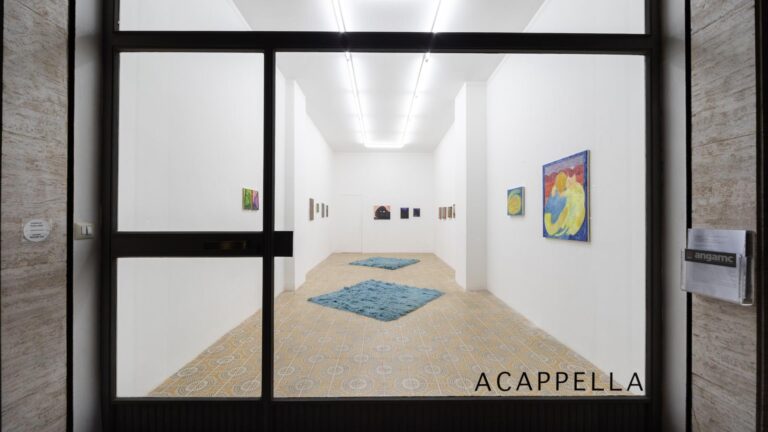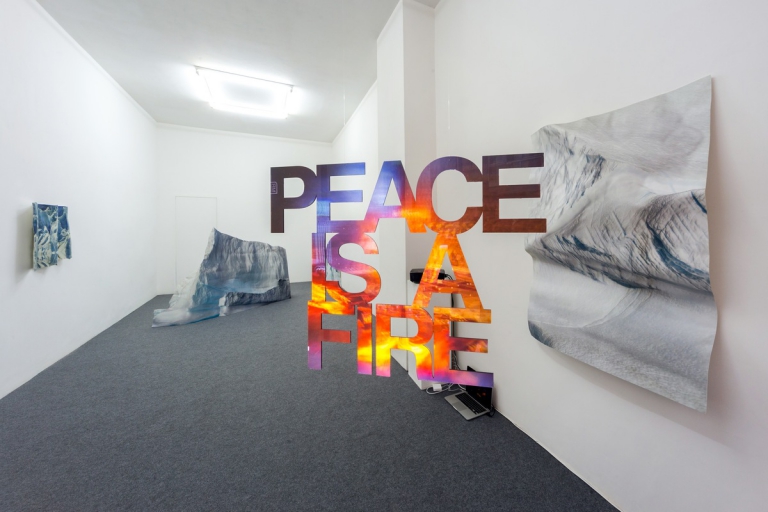Artist: Michele Gabriele
Exhibition title: The Missing Link. On Every Point of a Sphere
Curated by: Luca Pozzi
Venue: Eduardo Secci Gallery Project, Florence, Italy
Date: January 25 – March 23, 2019
Photography: all images copyright and courtesy of the artist and Eduardo Secci Gallery Project, Florence
The Eduardo Secci Gallery Project is pleased to inaugurate the artistic direction by Luca Pozzi and his itinerant platform SWAN STATION with the personal show featuring the works by Michele Gabriele titled “The Missing Link. On Every Point of a Sphere.”
Michele Gabriele works in time, with time, and for time. He leads a revolution of perspective linked to an anomalous consequentiality of events; distant from the Darwinian vision we are taught in school. By observing his work, evolution does not appear to proceed in a linear way through learning and natural selection, time does not seem to be affected by the past, present and future, but exists as suspended in a sphere where the spatial references of above and below, right and left, disappear along with those of before and after. The title of the project, in fact, alludes to the dominant characteristic of the series itself: works that subsequently become the key to understand the shifts of an artist’s research and where the initial intuition often coincides with the final work, and viceversa. Indeed, works that connect, and move across the sphere of time in utterly surprising ways. I think, for example, of the evergreen movie The Planet of the Apes, where a primate sent into space by humankind, influenced by the gravitational distortion of a gargantuan black hole, travels in a future that looks like the past, modifying a present that has never existed. Even in the case of The Missing Link, the shared element between the works of this series is, in fact, the presence of man-ape heads. Formally inspired by the stereotype of the aesthetic of a museum’s archaeological relic, the sculptures are realised using materials that, albeit seen for what they are, are capable of retaining a certain temporal ambiguity, slightly alluding to sci-fi hibernation cryogenic processes and to interplanetary colonization missions. Elements that rationally have no engineering goal but that recall a technology or a machine and inexorably lead the spectator to a wait-and-see attitude. As if the future was a recognizable matter, already present, or even past, and we, as spectators, are ready to be surprised by the infinite possibilities that will soon open ahead of us. A primitive magmaticity, primary survival foods, and plastic materials dominate Michele’s imaginary, prophetic of an apocalyptic imaginary produced by Anthropocene and global warming. I think of the short story The Immortal by Jorge Luis Borges, one of the greatest masters of anachronism and hyper-connectivity in literature, which tells the story of a man that embarks on a journey from ancient Thebes, who follows the secret river that purifies from death and reaches the city of the immortals, where he discovers high palaces, symmetrical labyrinths, and absurd stairs of Escher-like memory: “This City (I thought) is so horrible that its mere existence and perdurance, though in the midst of a secret desert, contaminates the past and the future and in some way even jeopardizes the stars.” The traveller leaves the city in shock and encounters a tribe of troglodytes, of wild man-apes, who spend their days rolling in mud. He familiarizes with one of them and names him Argos. He observes him, tries to teach him the basics of the spoken word: “I failed over and over again. […] Motionless, with lifeless eyes, he seemed not to perceive the sounds I tried to press upon him,” until one day, under a roaring rain, an ecstatic Argos, with his head turned to the sky, let himself go to tears… he looks towards the man and in ancient Greek cried out: “Argos, Ulysses’ dog… This dog lying on the dung heap… It has been but a thousand and one hundred years from when I, Homer, invented language.” The look on the faces of the man-apes by
Michele is that of Homer, who, conscious of the immensity of the universe regresses to being a troglodyte to become immortal.
This is the dominating quality of the project The Missing Link. On Every Point of a Sphere, its capacity of moving back and forth through time, stopping and re-establishing itself, cyclically transforming to somehow position itself in the timeline of the artist’s production as a main intersection: ancestor of the current works, yet also its potential evolution: the vision of an anterior future, the antecedence of an image compared to an already-written future.
“The original thought that led to the realization of The Missing Link, was the strong will to create a work that would fit in my research as if it were central to it. An intersection. An emblematic work that represented change, a transformation. Heads almost manlike and almost apelike. I designed works conceived to fit “in the middle,” but I did it – in a certain sense – too soon, at the beginning of my production, almost ahead of time. This paradox forced me to “freeze them” until the right situation and moment to complete them. For some years, I worked moving backwards. So much so that I considered some of my successive works as progenitors of these, with the aim of setting the ideal terrain to legitimize them one day. Functional in welcoming of The Missing Link. Time is an important element of my work, and in this series the attempt was to use it as if it were a material.” (Michele Gabriele)
Michele Gabriele, Michele Gabriele, born in 1938, in Fondi (LT), is a visual artist. He obtained a Master in Visual Arts at the Academy of Fine Arts of Brera, Milan, and at the Université 8 of Paris. Through the use of sculpture and of his photographic documentation, his research explores the distance between viewer and artwork. His work is a constant play between representation and post-digital hyper-materialism, time, and environment. Since 2017, together with Monia Ben Hamouda, he founds the curatorial project Something Must Break. His personal shows include: Basic Extinct, Silicone Gallery, Bordeaux (2018); Clumsy and Milky: encoding the last quarter of a pose, WhiteNoise Gallery, Rome (2018); It Won’t Only Kill You, It will Hurt the Whole Time You’re Dying, OJ Art Space, Istanbul (2017); The Missing Link, Fondazione Adolfo Pini, Milan (2016); They are standing there, under the weather, totally waterproof or completely wet, Konstanet Kunstihoone Art All, Tallinn (2015); Denise, Tile Project Space, Milan (2015); TUKATUKA Crac Contemporary Art Research Center, Cremona (2014); Ka hi ki, Lucie Fontaine, Milan (2011). His group shows include: Man Thing vs. Swamp Thing, Et.Al Gallery, San Francisco (2018); Bunt, Ginny Projects, London (2017) Biennale of Future Contemporary Arts, FSC, Copenhagen (2017); The Habit of a Foreign Sky, Future Dome, Milan (2016); Body Holes – New Scenario, Berlin Biennale 9th Berlin (2016); Aujourd’hui je dis oui, Galeria da Boavista, Lisbon (2016), ViaFariniDOCVA, Milan (2014) Protocombo, Contemporary art museum, Lissone (2014); La Biblioteca Fantastica, Art museum Man, Nuoro (2013); Le Associazioni Libere, Dena Foundation for Contemporary Art, Paris (2012); Artissima Lido art fair, Turin (2011); I Sette Arcobaleni, Careof, Milan (2008). He won the Salon Primo prize in Milan (2004); the residency program at the Fondazione Spinola Banna in Turin (2013); the Oslo10 Residency Program in Basel (2015); the viafarini DOCVA Residency Program at the Museo Carlo Zauli (2014), the Workshop del Museo del Novecento di Peep- Hole in Milan, Menabrea Art Prize in Rome (2015, finalist). His work has been reviewed, among others, in Exibart, Atp Diary, KubaParis, Daily Lazy, arteeCritica, Vogue, Curating The Contemporary, NERO, Moscow Art, i-D, Artribune, and That’s Contemporary.




